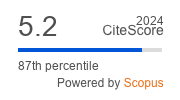Article | Open Access
The European Central Bank: From a Price Stability Paradigm to a Multidimensional Stability Paradigm
| Views: | 3053 | | | Downloads: | 3503 |
Abstract: This article maps and explains the shift in economic thinking at the European Central Bank (ECB), i.e., its “ideational” evolution over the past two decades. When the ECB was set up in 1999 its institutional design and epistemic outlook were very much inspired by the legacy of the German central bank, the Bundesbank. Thus, the ECB embraced a “price stability” paradigm that prioritized inflation control. However, over time, policy learning in response to economic shocks (first and foremost, a series of consecutive financial and economic crises from 2008 onwards) and the internal organic evolution of the ECB have led to a shift of economic thinking at the Bank, which has also been reflected by its policy actions. The new paradigm can be characterized as a “multidimensional stability” paradigm. By relying on inter alia secondary literature, speeches, semi-structured elite interviews, and data we collected concerning the previous experience at national central banks of senior ECB staff, we identify a novel causal mechanism for ideational change at the Bank: the change in the composition of senior managerial staff from 1999 onward.
Keywords: central bank; crisis; euro; European Central Bank; monetary policy; policy paradigms
Supplementary Files:
Published:
© Amy Verdun, Lucia Quaglia. This is an open access article distributed under the terms of the Creative Commons Attribution 4.0 license (http://creativecommons.org/licenses/by/4.0), which permits any use, distribution, and reproduction of the work without further permission provided the original author(s) and source are credited.


